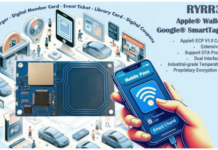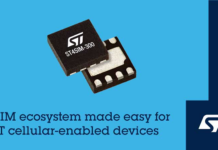
As the prevalence of the Internet of Things (IoT) and connected devices continues to affect a growing number of industries, the mindset of U.S. consumers towards these new innovations is evolving. New research from Worldpay, a leader in global payments, reveals more consumers are ready to embrace the automation and convenience delivered by IoT technologies. From chatbots and virtual assistants to connected devices, the interest and opportunity is there, but there is still work to be done in ensuring consumers see value in these new IoT experiences.
In their new Connected Consumer research, Worldpay examined the opinions of 20,102 consumers across 10 markets related to IoT, connected devices and the use of payments via the technology. In the U.S. specifically, nearly half of consumers (48%) said they would feel comfortable with a connected device, such as a refrigerator, ordering items on their behalf. However, 62% would want to approve all purchases beforehand and 78% would prefer to be notified before the order is placed.
The data study highlights openness to IoT amongst U.S. consumers, but the need for reassurance when it comes to important factors, such as payments and security.
Casey Bullock, General Manager for North America at Worldpay said: “No matter if done by a human or machine, it is vital for consumers to remain in control when they’re delegating payment tasks. Our research has found that there should always be a conscious ‘act of consent’; be that via a device notification, button push or a pre-set rule like a spending limit, being agreed in advance.
“The beauty of technology advancements means that there are many opportunities for virtual assistants and connected devices to make consumers lives easier. If machines can offer consumers a ‘concierge’ style service that reduces day-to-day life admin and menial tasks then there’s no reason why they won’t want to delegate some of their shopping responsibilities – after all, we would all appreciate an extra bit of time to ourselves. In the end, consumers need confidence that machines can be trusted to make the right decisions and keep their owners informed and in control.”
Key U.S. findings include:
Sparking meaningful digital conversations
While virtual assistants and chatbots are rising in popularity — specifically through an increasing number of consumer-centric devices such as Amazon Echo and Google Home — there is still work to be done in helping consumers fully embrace this technology. Most importantly, respondents would like the virtual assistants and chatbots they interact with to have two personality traits: helpfulness and intelligence.
- 35% of consumers would “probably” or “definitely” consider using a virtual assistant to perform a simple task.
- Many respondents (48%) remain skeptical about a virtual assistant ever being able to conduct a conversation like a real person.
- While 55% of consumers would welcome the convenience of a chatbot or virtual assistant shopping on their behalf, only 37% would allow a virtual assistant to have access to their payment information.
Finding comfort in connectivity
Connected devices, along with robots and drones, open the door for consumers to experience automated ordering and delivery in new ways. U.S. respondents are fairly enthusiastic about using this technology in their daily lives, however those feelings vary greatly across generational divides.
- While 62% of millennials would allow a connected device to order something without asking, just 22% of consumers over the age of 55 feel the same.
- A significant number of consumers said they would be comfortable with drones delivering purchases to their home and robots performing tasks within their homes, 50% and 49% respectively.
- The overwhelming majority of respondents (73%) expressed concerns about the manufacturers of these devices having access to their personal data, while 77% worry about devices being hacked by fraudsters.
To help companies explore the possibilities of machine-to-machine payments, Worldpay is trialing an open source software development kit (SDK) to facilitate payments between connected devices. Worldpay Within is an embeddable payments agent that allows smart devices to make and accept payments simply, quickly and securely. With the number of connected devices estimated to reach 20 billion globally by the end of 2017, making sure these technologies can communicate effectively and securely will be crucial to getting the most value out of them.
For more information visit: https://wptechinnovation.github.io/worldpay-within-sdk/.


















